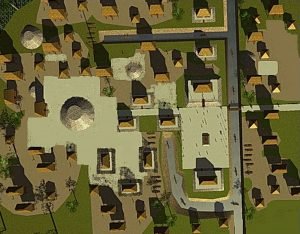Neches-Angelina Confederacy
Since Indian political organization was at best but loose and shifting and was strongly dominated by ideas of independence, and since writers were frequently indefinite in their use of terms, it would not be easy to determine with strict accuracy the constituent elements of this Neches-Angelina confederacy at different times. However, a few of the leading tribes those of greatest historical interest stand out with distinctness and can be followed for considerable periods of time. De Leon learned in 1689 from the chief of the Nabedache tribe, the westernmost of the group, that his people had nine settlements. Francisco de … Read more


